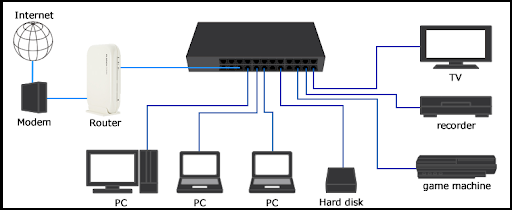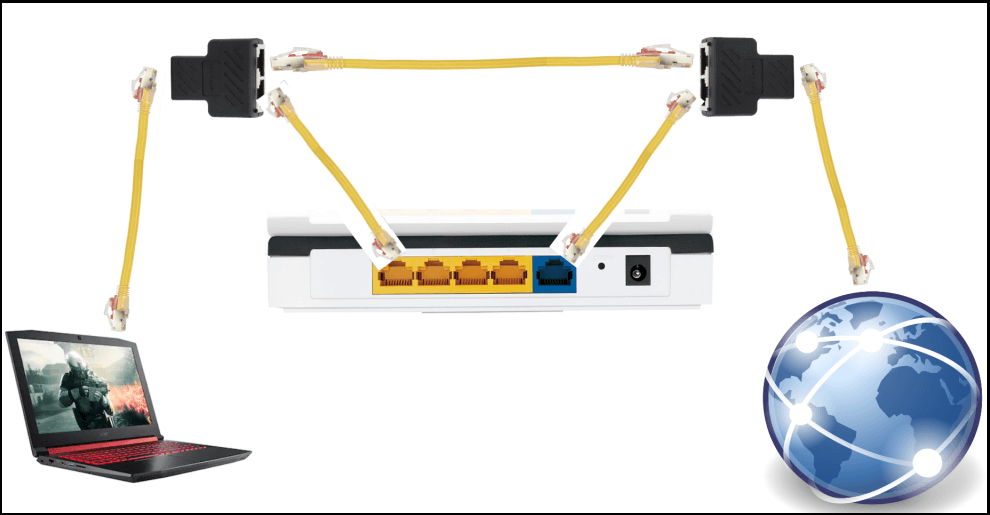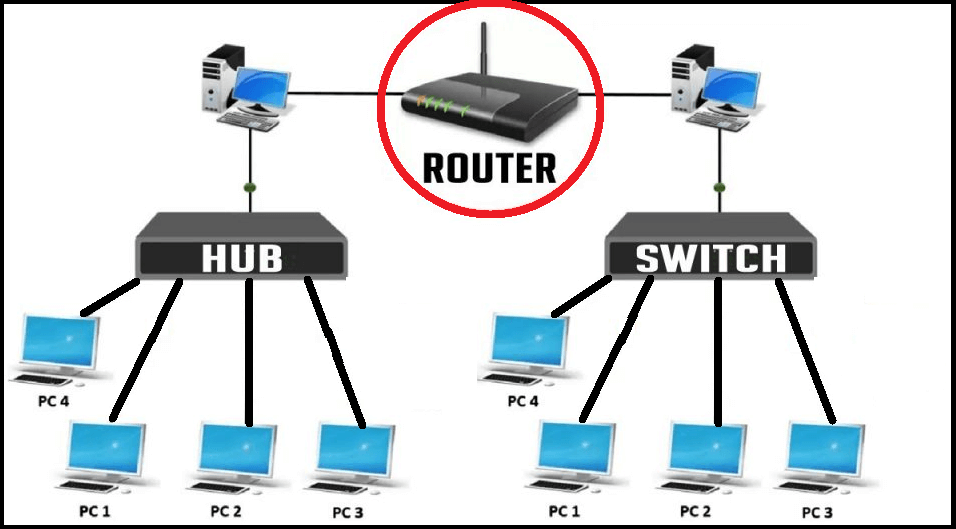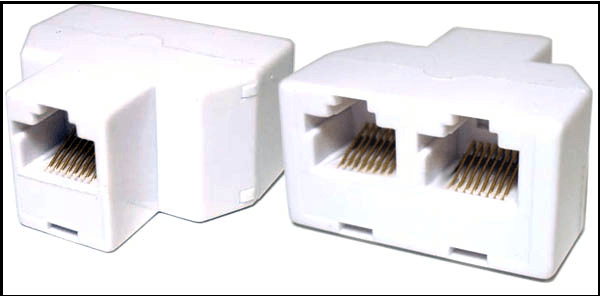Here we will provide you detailed information regarding Ethernet switches, hubs, and splitter. So, if you’re interested, read along.
About Ethernet Switch
An ethernet switch or a network switch is a tool that connects wired devices like printers, computers to each other. It’s quite easy to operate. You can simply connect one port to connect your router’s switch using the ethernet. And after that, you can connect any Ethernet devices using the remaining ports. One ethernet port can act as multiple ports. It offers full-duplex communication between the devices. It means you can both send and receive the data at the same time. And this helps in easy and fast communication. Also, ethernet switches are quite affordable. You can find one with 5 and 8 ports according to your requirements.
Functioning:
You just need to connect the router using an ethernet cable to the switch, and after that, you can connect additional devices.
Key Benefits
It can save up to 80% of the energy Durable because of the metal casing Eight ports available Plug and play feature Lifetime limited warranty
About Hub
Ethernet hubs look pretty much similar to an ethernet switch and help in connecting multiple ethernet devices. However, it comes with half-duplex communication. It means you cannot receive and send data at the same time. This leads to collisions and data holdups resulting in a slow network.
Functioning:
Ethernet hubs are easy to work with. However, it comes with a half-duplex communication that prevents you from sending and receiving data simultaneously.
Key Benefits
Energy Efficient Five ports are available Very silent while in use Plug and play option Have good warranty
About Splitter
When you want to reduce the number of cables running through the walls and floor, an ethernet splitter is what you need. However, ethernet splitters must be bought in pairs. It’s because when you use a splitter, you can convert two wires into one. But when you reach the other side, you need an extra splitter for un-splitting. You can use the Ethernet splitter to reduce the wires, but it reduces the output from 1000Mpbs to about 100Mbps. The splitter may sound like a great solution, but they reduce the data transfer speed between the devices connected via ethernet. You can connect only two wires at a time with this splitter. It may come in handy in some cases, but most of the time, people prefer ethernet switches. So, if you have small ethernet cables, go for the splitter; otherwise, avoid it.
Functioning:
Ethernet splitters are of 100 Base T standard, which is why they support two cables. When you have to connect the ethernet cables to another device, you’ll need another splitter to un-split the connection. You can prefer an ethernet splitter if you have a small setup like for two devices.
Key Benefits
Can divide a cable into two outputs Very simple design and easy to use
Ethernet Switch vs. Hub vs. Splitter Comparison & Table
Below is a brief comparison between the ethernet switch, hub, and splitter. It’ll help you understand the difference better.
Ethernet Switch vs. Hub
Ethernet hubs and switches have a somewhat similar role to play. We’ll discuss the frames to understand the differences better. You can think of frames as a connection that carries the data. You can receive, amplify and then transmit the frames. The difference lies in how the frames are being sent. If you consider hubs, then they cannot examine the received or data that is sent. When a frame comes at one port, the remaining ports copy the data and deliver it to the destination. And using this feature, a hub can establish multiple connection points. The downside of this is the traffic it causes. As the hub needs to share the bandwidth with all the ports, this causes a network slowdown. And this is the reason why hubs are used for small home networks. Now for the ethernet switches, they can keep a record of Medica Access control or the connected devices’ mac address. So, whenever a frame is received, the switch can examine it or know which port it’ll be sent to. Also, the switch allocates full bandwidth to each of its ports. To choose one, the ethernet switch is considered better as compared to the hub. You can use an ethernet switch that offers an eight-port switch.
Ethernet Switch vs. Splitter
When you want to connect different devices, an ethernet switch is the best choice to make. It can help you connect a PC, video game console, and a printer at one time. However, you need to supply a power input to let the ethernet signal divide into different signals. An ethernet switch can allow you to connect and use multiple devices at a time. For a splitter, you won’t need a power input. But you need to use the splitters in pairs. You want to connect two PCs placed in one room and a switch in the other room. In this case, you’ll need a splitter.
Conclusion
Each of these connecting devices comes with advantages and disadvantages. A splitter is a great device when it comes to a passive optical network. You need to supply power input for a split ethernet connection. Also, you can use a single ethernet cable to connect 2 PCs to one network device. When it comes to the ethernet switch, you need to provide a power input. And using this, you can divide the ethernet signal into numerous signals that can operate individually. Ethernet switch is a high-speed device where you can use one port for connecting to the router and others for connecting other devices. The Ethernet hub doesn’t allow you to send and receive the data at the same time. And this acts as a limitation. The more devices you connect with an ethernet hub, the harder it becomes. It slows the network because of data clogging. So, it is preferred for small connections. Comment * Name * Email * Website
Δ












![]()